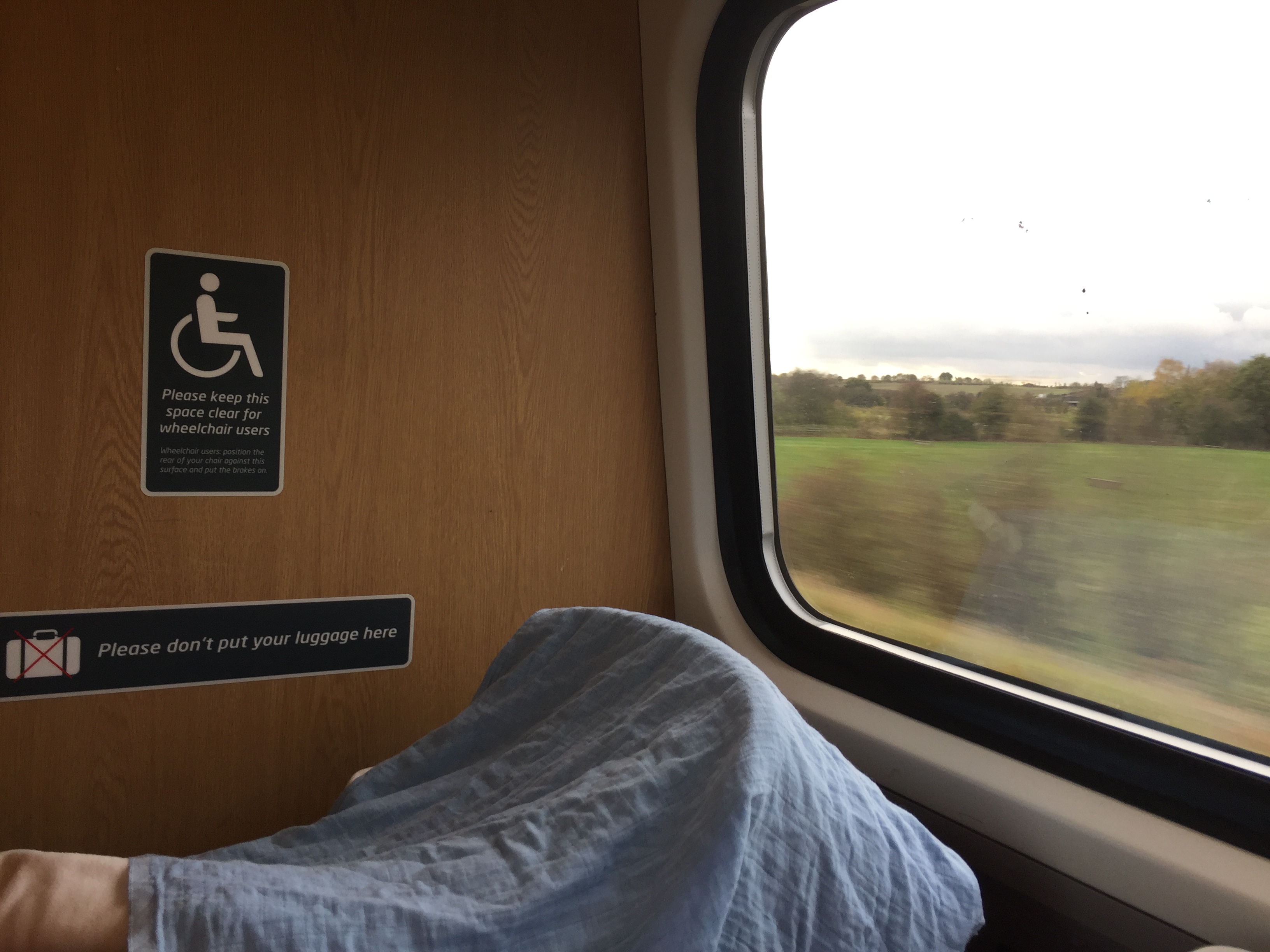It pays to be very organised when it comes to taking a baby or toddler on a train, particularly if it’s going to be a long journey. Not all train companies will let you reserve a seat, and even the train companies that do don’t necessarily offer reservations on all their routes, but if you can book a seat, you should.
And the seat you should book, if it’s possible to specify (you can when booking direct through the Virgin trains website, for example, right at the very end of the booking process, or in person or on the phone with Great Western Railway), is one of ones closest to the wheelchair accessible seats. That way, if there’s no wheelchair user on your train, you can park the pushchair – unfolded – in the wheelchair space (it goes without saying that if a wheelchair user gets on, you have to give up the area for them). This avoids the faff of folding and stowing the pushchair in the luggage rack, but it also means you’ve got a place to put your baby down for a nap during the journey if need be. The wheelchair seats are also the closest to the disabled toilet, which is where you’ll usually find the baby change.

If you can’t choose your actual seats when making a reservation (the case with the majority of operators), the next best thing is to select the ‘near the toilet’ option, as this will at least mean that you’ll be as close to the end of the carriage as possible. You might then have the option of leaving the pushchair unfolded, and standing with it while your baby sleeps, while at the same time keeping an eye on your stuff (less of an issue if you’re travelling with someone else of course).
This plan won’t work if the space between the carriages is small or if the train is busy, so be prepared to fold your pushchair. The underneath of the baby girl’s pushchair is perpetually in chaos, making it difficult to fold in a hurry, so before I set out on a train journey I try to remember to do an audit, taking out the non-essentials and making sure all the bits and bobs I might need are in one bag that I can quickly grab out of the pushchair and take with me to my seat. Travelling off-peak is always going to be preferable, but if that’s not an option consider leaving the pushchair at home. If you can get away with a sling instead you’ll have a much less stressful experience on a busy train.

In situations where you haven’t been able to reserve the seat you want, get to the platform as early as possible and ask a member of staff where the carriage with the wheelchair seats will be stopping, so you can be first to those seats. There’s a website and app called Realtime Trains that train staff use to get advance information on which platform trains are coming into – it’s a useful way to get ahead of the crowd on busy routes.
Once you’re seated, other things to consider are food and activities. I learnt the hard way that the staff in the café carriage can’t heat up baby food for you in the microwave – the ones on trains are too powerful apparently. They’ll give you hot water though, so heating up milk isn’t a problem. If you want to give your child hot solid food, pouches are a good idea.
A quick note about milk while I’m on the topic – while I’ve found breastfeeding to be far and away the most convenient option when it comes to travelling with a baby, the one situation in which I was glad to have a bottle with me was on an extremely busy train on the way to Hull when the baby girl was seven-weeks-old. It’s not impossible to breastfeed standing up on a tightly packed train, but it’s not ideal, especially if you’ve also got a couple of bags with you.
As far as activities are concerned, bring as many books and toys as you can bear to carry – it’s stating the obvious, but long train journeys are boring for small children. If you’ve nabbed those coveted wheelchair seats, put a picnic blanket on the floor to make a play area. The baby girl is only happy sitting on my lap for so long, and when she wants to be on the move, it’s easier to let that happen than to fight it.
Once you’ve reached your destination you may need to take a bus or, if you’re in London, the Underground. Check out my post on navigating public transport with a pushchair for tips on how to do that.

